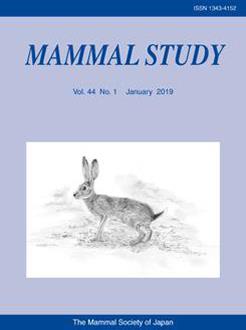Static skull morphological variation in the large Japanese field mouse (Apodemus speciosus) was analyzed using different indices of variability. Multivariate analysis of variance revealed sexual dimorphism in cranium and mandible sizes, among a total of 89 skulls (45 males and 44 females). The coefficient of variation (CV), standard deviation (SD), and residuals of the standard deviation (RSD) were regressed onto the mean (M) of each skull measurement. The CVs did not differ significantly between sexes and exhibited an inverse relationship with the M of skull measurements. Moreover, the CVs for the pre-orbital region and mandibular height tended to be larger than those for the inter- and post-orbital regions. The allometric trends revealed isometry and positive allometry in the pre-orbital region, and negative allometry in the inter- and post-orbital regions. These findings imply a general trend toward ontogenetic skull growth in rodents, as reported in previous studies. Univariate analyses demonstrated significant differences between sexes in several variables, as did canonical discriminant analysis. In conclusion, we suggest that the sexes mainly differ with respect to skull size, despite exhibiting similar trends in variability among skull variables.
How to translate text using browser tools
25 January 2019
Morphological Analysis of Static Skull Variation in the Large Japanese Field Mouse, Apodemus speciosus (Rodentia: Muridae)
Jadab Kumar Biswas,
Masaharu Motokawa
ACCESS THE FULL ARTICLE

Mammal Study
Vol. 44 • No. 1
January 2019
Vol. 44 • No. 1
January 2019
allometric analysis
coefficient of variation
intraspecific variation
Rodentia




